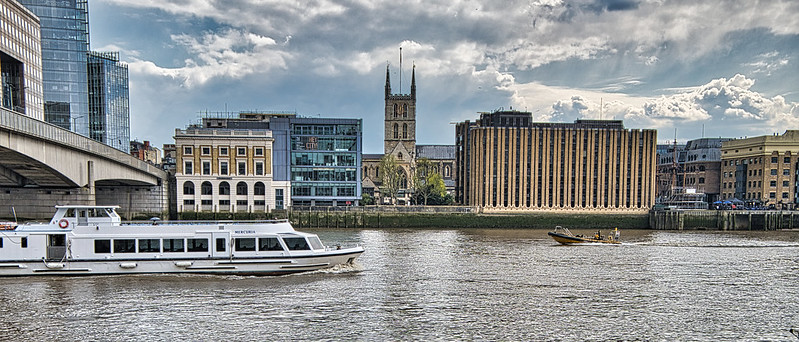
Photo: Geoff Henson (Flickr)
Increasing London river freight deliveries could cut congestion
15 February 2022
by Christopher Carey
A new report from the UK’s Thames Estuary Growth Board has touted the untapped potential for freight deliveries on London’s primary river, the Thames.
The report, Light Freight on the River Thames, claims the river can be better utilised for large-scale light freight deliveries of parcels, food, beverages, and retail goods, which in turn could ease congestion and reduce air pollution.
Commissioned by the Thames Estuary Growth Board and the Port of London Authority–and delivered by engineering consultancy WSP–the report states that at a small scale, river freight will not be feasible compared to road delivery, but that ‘handling just 3 percent of the 700 million parcels destined for London could make river freight competitive’.
“This is an opportunity we cannot afford to miss, as we continue to strive toward net zero and deliver the world’s cleanest, greenest estuary,” said Perry Glading, Deputy Chair of the Thames Estuary Growth Board.
“We are delighted with the work that WSP has put into creating the models and recommendations and look forward to putting them into action.”
Water-based deliveries accounted for just 13 percent of all domestic goods moved across the UK in 2019, according to data from the Department for Transport.
Recommendations
Light river freight is already showing signs of resurgence, with DHL utilising the river for parcel trade and Guys and St Thomas NHS Trust delivering medical supplies.
The report established a number of goals to advance river-based deliveries, including:
- Creating a coordinating body with political backing that can put pressure on stakeholders to help facilitate riverside developments.
- Show how operations at key points–loading, unloading and last mile–can work seamlessly and efficiently to attract long-term, or anchor, customers.
- Develop detailed options for pier development that minimise costs and maximise market access.
- Realise the social benefits of river freight through revenue support mechanisms and improve the understanding of customer willingness to pay for environmentally friendly deliveries.
- Push for limited increases in road pricing to facilitate an enormous reduction in van traffic.
- Enter discussions with large, innovative online businesses that can become potential anchor clients.
- Support the development of proof-of-concept trials, including those currently underway.
James Trimmer, Director of Planning and Environment for the Port of London Authority (PLA) said: “The Thames is home to the UK’s largest port and inland waterway and provides a sustainable and reliable, congestion free highway into the heart of the capital.
“The WSP report shows how ‘joining the dots’ between port and consumer is a very real possibility and one which will deliver manifest environmental and wider social benefits. At the PLA we’re working daily to turn this potential into reality.”
Image: Geoff Henson (Flickr)








